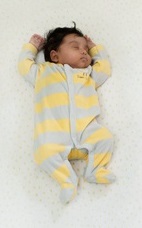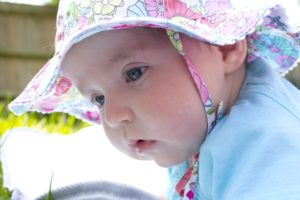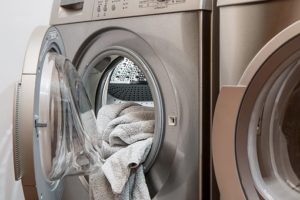Your baby’s clothing
The clothing you buy for your baby will depend on the time of year. Since babies grow very quickly, buy very little of the smaller sizes. Cotton or cotton-blend clothing is comfortable, soft, non-irritating and easy to wash.
Clothing for your baby should be
- large enough for your baby to feel comfortable
- non-flammable
- childproof (avoid small buttons, removable decorations or strings)
- easy to put on (avoid clothing that fits over your baby’s head unless it has a wide opening)

Your baby can overheat easily. To keep your baby safe and comfortable
- don’t overdress your baby. Dress your baby in about the same amount of clothing as you are wearing. Cold hands do not always mean a cold baby. One way to gauge if baby is warm enough, is to touch your baby’s tummy or back, it should feel warm. Add or remove layers of clothing and/or blankets if your baby feels cool or hot and sweaty.
- don’t use electric blankets, heating pads or hot water bottles in their bed or stroller
- remove hats when indoors
Outside in the summer
The sun can damage your baby’s sensitive skin. Your baby will be safe and comfortable if you:
- dress your baby in lightweight, loose clothes that cover arms and legs and a wide-brimmed hat
- keep your baby in a cool, shady spot
- keep your baby out of direct sunlight
- sunscreen is not recommended for use on a baby for the first 6 months

Outside in the winter
Don’t keep your baby outside for long periods when it’s very cold. Keep your baby safe and comfortable by:
- covering your baby’s head, hands and feet and protect their face (remember to remove extra layers, especially off the face, once indoors/in the car)
- dressing your baby with one more layer of clothing than you are wearing

Laundry
You can help prevent skin rashes/reactions if you:
- wash all new and used baby clothing using a mild scent-free, hypoallergenic detergent (baby specific detergent can often be perfumed and may not be suitable)
- avoid fabric softeners and dryer sheets
- an alternative to fabric softener is to rinse your baby’s clothing twice or add 120 mL (1/2 cup) of vinegar to the final rinse
